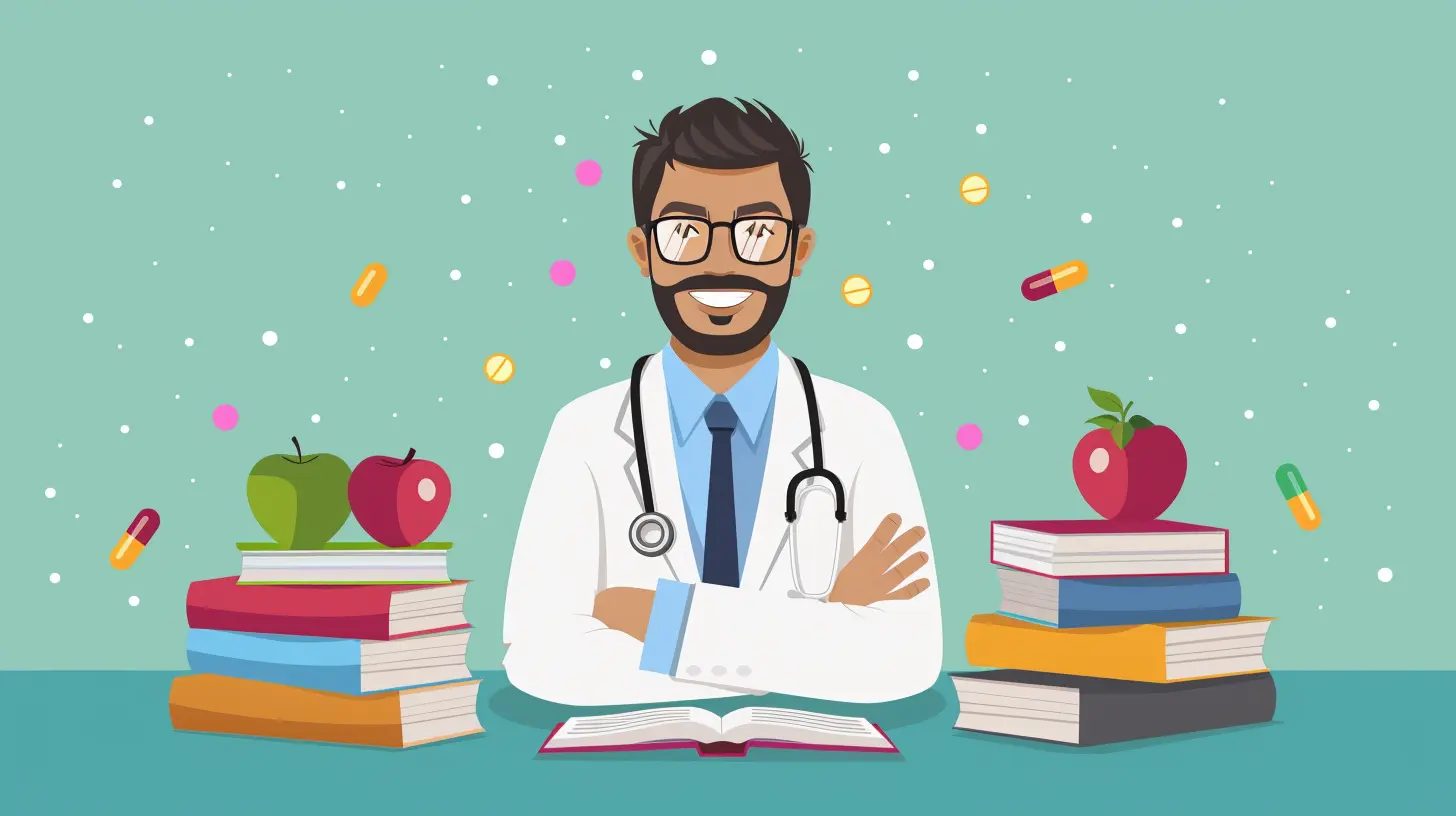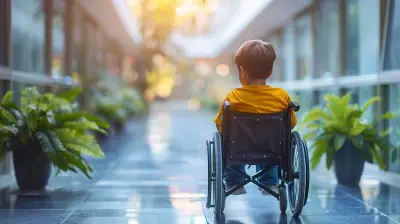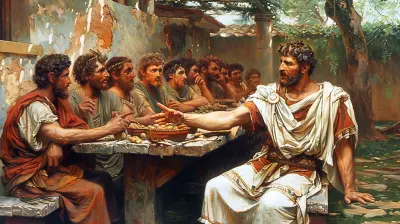Health Literacy: Teaching Students to Make Informed Decisions
12 October 2025
Imagine being sick, reading a prescription bottle, or having to choose between two treatments, and not having a clue what any of it means. That’s where health literacy comes in — and believe it or not, a lot of people, especially students, are still fumbling around in the dark. So, how do we change that?
Let’s dive into how we can arm our students with the right tools to make smarter choices about their health, both now and down the road. Because the reality is, health literacy isn’t just about reading labels — it’s about life, literally.
What Is Health Literacy Anyway?
Let’s break it down. Health literacy is the ability to find, understand, evaluate, and use health information to make informed choices. Sounds pretty simple, right?Well, here’s the kicker: it’s not just about reading a brochure or typing symptoms into Google. It’s about knowing who to trust, asking the right questions, understanding your body, and making decisions that aren’t just convenient but actually healthy.
In schools, health literacy means teaching students how to:
- Read and understand health information
- Navigate the healthcare system
- Ask questions to doctors and nurses
- Understand what a balanced diet looks like
- Tune into mental health warning signs
- Avoid misinformation (hello, TikTok health trends!)
You get the point.
Why Does Health Literacy Matter for Students?
Ok, so why should we even care about teaching health literacy in school? Isn’t that something you pick up as an adult?Not really. Think about it — students:
- Make food choices every day
- Deal with stress, anxiety, body image, and peer pressure
- Get sick (hello, flu season)
- Often manage their own minor injuries or illnesses
- Are bombarded with health info (both good and bad) from social media
By teaching them how to understand and use health info now, we’re setting them up to be healthier adults. We’re talking fewer doctor visits, better mental wellness, smarter lifestyle choices, and even lower healthcare costs down the road.
The Current State of Health Literacy in Schools
Spoiler alert: it’s lacking.A lot of schools still treat health class like an afterthought. You’ll get a quick overview of the food pyramid (which by the way, has been replaced), maybe a scare-you-straight session about drugs or STDs, and that’s about it.
What’s missing?
- Real conversations about mental health
- Navigating online health myths
- What to do if you're overwhelmed or feel unwell emotionally
- Understanding common medications
- Knowing when to seek help (and where to find it)
Bottom line? We could be doing way better.
Core Components of Teaching Health Literacy
To make real progress, we need to break health literacy into bite-sized parts. Here are the core skills students need:1. Accessing Health Info
First things first, students need to know where to go for the RIGHT info. Not just Googling “Do I have cancer?” at 2 a.m.Teach them:
- To use reliable sources (CDC, WHO, Mayo Clinic, etc.)
- How to spot fake news
- The difference between anecdotal advice and scientific fact
2. Understanding Health Info
Okay, now they’ve found a source. But can they actually understand it?We need to teach:
- Basic medical terms
- Interpreting food labels
- Understanding prescriptions and dosages
- Making sense of infographics and health apps
3. Evaluating Health Info
Now, is the info accurate or total nonsense? That’s a big one.Help students develop critical thinking skills, like:
- Checking for source credibility
- Asking: “Who benefits from this info?”
- Understanding bias (especially in product ads)
4. Applying Health Knowledge
This is where it all comes together.It's not enough just to read about a healthy lifestyle — students should be able to:
- Choose better food options
- Manage stress and emotions
- Know what to do in a medical emergency
- Make informed decisions about their bodies and well-being
Practical Ways to Teach Health Literacy in Schools
Now that we’ve built the “why,” let’s get into the “how.” How can educators integrate health literacy into the classroom in a way that sticks?1. Make it Part of the Curriculum (Not an Afterthought)
Like math or reading, health literacy should be foundational.Incorporate it into:
- Health and PE classes
- Science curriculum
- Life skills or personal development courses
2. Use Real-Life Scenarios
Here’s a tip: throw out the textbook, and bring in the real world.Create classes where students:
- Role-play a doctor’s visit
- Create a grocery list for a balanced diet
- Read and interpret a medicine label
- Research and present on a health topic
Make it tangible, make it relatable.
3. Involve Technology (But Teach Them to Be Skeptical)
Students love screens — use that. But also teach them when tech is misleading.Some cool ideas:
- Have students analyze health TikToks or Instagram posts
- Use virtual tools like MyPlate.gov or sleep trackers
- Compare search results from different sites
- Discuss the impact of health influencers
4. Bring in Experts
Invite guest speakers: doctors, nurses, therapists, nutritionists.Let students hear directly from people in the field. Plus, they can ask questions and get honest answers — sometimes that’s way more impactful than any worksheet.
5. Create Safe Spaces for Talking About Mental Health
Mental health is a huge part of health literacy. Create an inclusive, open environment where students feel safe talking about:- Anxiety
- Depression
- Relationships
- Bullying
- Body image
Even just starting the conversation can be incredibly powerful.
Health Literacy and Digital Citizenship
With all the junk floating around online, digital literacy and health literacy go hand in hand.Teach students to be smart, skeptical, and responsible digital citizens:
- Check sources (no, your cousin’s blog isn’t legit)
- Avoid spreading health myths or fear-mongering
- Understand how data from health apps can be shared or misused
- Respect privacy when talking about others’ health issues
Building Lifelong Healthy Habits
Here’s the ultimate goal: develop not just one-time lessons, but long-term habits. Health literacy should be ongoing, not a one-and-done.Encourage students to:
- Ask questions — lots of them
- Stay curious about their bodies and minds
- Challenge misinformation
- Make health part of their identity, not just an obligation
Think of it like planting a garden. You don’t just toss seeds and hope. You teach them to water, weed, check the soil, and pay attention. That’s what health literacy is about — nurturing a lifelong relationship with wellness.
Supporting Teachers to Teach Health Literacy
We can’t forget: teachers need support too. Many of them didn’t grow up with health literacy lessons either.Here’s how schools can help:
- Offer professional development focused on health education
- Provide access to updated curricula and resources
- Create collaborative opportunities with local health organizations
- Encourage a schoolwide culture of wellness
Let’s make sure teachers aren’t just winging it. When they’re confident, their students will be too.
The Role of Parents and Communities
Health literacy isn’t a solo mission. Parents and community leaders play a major role.Here’s how they can help:
- Talk openly about health at home
- Encourage healthy habits (meals, sleep, exercise)
- Be mindful of the example they’re setting
- Sponsor school health events or workshops
Working together? That’s where the magic happens.
Looking Ahead: Health Literacy in a Changing World
The world is changing fast — pandemics, climate change, mental health crises — and our students need to be ready. The more health-literate they are, the better they’ll be able to face whatever comes their way.It’s not about turning them into doctors. It’s about giving them the confidence to make decisions that protect their health and well-being.
So, what are we waiting for?
Let’s make health literacy a permanent part of the classroom. Because informed students become empowered adults — and honestly, isn’t that what education is all about?
Final Thoughts
We don’t have to overcomplicate it. Teaching health literacy is about showing students how to care for their minds and bodies, how to ask questions, and how to make choices that serve them. It’s about replacing confusion with confidence.So whether you're a teacher, a parent, or even a student yourself — start the conversation. Ask questions. Share resources. Make health part of the everyday dialogue.
When students learn to take control of their health with knowledge, they take control of their future.
all images in this post were generated using AI tools
Category:
Health EducationAuthor:

Zoe McKay
Discussion
rate this article
1 comments
Peyton Tucker
Unlocking the secrets of health literacy may reveal hidden choices. What knowledge lies beneath the surface, waiting for students to discover?
October 20, 2025 at 2:24 AM


